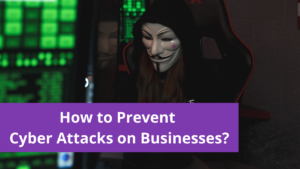Malvertising: How To Protect Yourself From Online Ads And Scams? The banner has established itself as the advertising format par excellence, appearing next to, above, or below the content on websites and typically containing a link to the brand. Over time, the Internet has developed into a potent medium with limitless marketing potential.
For some time now, so-called cybercriminals have increased their use of this kind of advertising to further their dubious goals. They do this by using harmless advertisements to covertly infect them for weeks or months with dangerous software. This is referred to as malvertising in the industry and presents marketers with a serious obstacle.
What is meant by malvertising?
The word advertising is a play on the words malware malicious software and advertising, which, in part, already indicates what it means. Through the use of previously altered advertising banners, this kind of software aims to infect a computer or a network. Cybercriminals employ a variety of techniques to accomplish this, and infecting a single page is just as plausible as seizing control of an entire ad network, leading to the widespread propagation of harmful code.
These banners automatically execute scripts, Flash applications, and other malicious programs that might infect your computer with viruses or Trojan horses when an unaware user clicks on one of them. Often, the victim is directed to shady or even modified web pages, and occasionally, getting infected only requires opening the page where an infected banner has been posted in this situation, we refer to a drive-by download.
How does malvertising work?
Different methods of computer infection by malware exist. The infection may be brought on by a user action or it may happen automatically. It frequently takes advantage of security flaws in the operating system, installed plugins, and the browser.
Older versions of the software and Flash code, whose security faults are very attractive to thieves, are particularly susceptible to this kind of infection. For these and other reasons, fewer and fewer web administrators are utilizing and sticking with Flash code – the new HTML5 standards are being replaced.
A victim’s unintentional post-click on infected advertising could be the start of a malvertising infection. The moment the malicious code is performed, the user is either routed to an infected web page or a download is initiated (often with the malware concealed in Flash files) without the victim even having a chance to react.
Malvertising is a tool used to spread all types of malware. We are increasingly seeing the rise of scareware, which fears or intimidates the victim into taking some hurried and unconsidered action. This type of malware includes traditional viruses, spyware, keyloggers (which eavesdrop on the data of their victims), and ransomware.
In contrast, that is, an unexpected script may already be executed before the user clicks on an advertisement (a process known as pre-click). The code is run in this scenario through a drive-by download, akin to a passthrough download, and in this scenario as well, the most varied types of malware can infect the user’s machine and significantly complicate his life.
What can you do to protect yourself from malvertising?
Protecting yourself from malvertising is crucial to maintaining a secure online experience. Here are some effective ways to safeguard yourself, along with one dedicated to using antivirus software
1. Maintain Software Updates
To make sure you have the most recent security patches, regularly update your operating system, web browsers, and plugins. Malvertising is frequently distributed by cybercriminals who take advantage of flaws in obsolete software.
2. Use ad-blockers
To filter out possibly hazardous adverts, add reliable ad-blocking browser extensions or software. Your exposure to harmful advertising can be greatly decreased by using these methods.
3. Enable plugins with click-to-play
Set up your browser to ask for your consent before launching plugins like Flash or Java. By doing this, harmful scripts can’t run without your permission.
4. Be Wary of Clicks
Be wary of clicking on advertisements, especially if they offer exciting or unrealistic discounts. To reduce your chance of coming across malicious advertising, stick to reputable and well-known websites.
5. Stay Informed
Keep abreast of the newest malvertising fads and strategies. You’ll be able to identify and steer clear of potentially harmful adverts if you are aware of common tactics used by cybercriminals.
6. Use VPN
Use a virtual private network (VPN) to encrypt your internet connection so that it is more difficult for hackers to intercept data or monitor your online activities. You can be protected from malicious advertising by using this extra layer of security.
7. Use Script Blockers
Add script-blocking browser extensions to your browser to restrict the scripts that are allowed to run on specific websites. This can lessen your exposure to dangerous advertising and stop malicious scripts from running.
8. Regularly Clear Cookies and Cache
Clear your browser’s cookies and cache regularly to get rid of any information that could be used by malicious advertisers.
9. Antivirus Software
Install a Powerful Antivirus Solution. Opt for a reliable antivirus program that provides real-time malware detection and protection against malicious advertising. To ensure that antivirus software can efficiently detect and stop the most recent threats, keep it updated. Regular system scans can aid in locating and removing any dangerous files or programs that may have evaded your security.
Conclusion
The danger of malvertising looms large in the digital world because internet advertisements have permeated every aspect of our surfing experience.
As we’ve discussed the sneaky characteristics of harmful advertising and the many dangers it presents, it is obvious that taking preventative measures to preserve ourselves is crucial. We may strengthen our defenses and move confidently in the virtual world by embracing a combination of knowledge, awareness, and strong tools.
You are well-prepared to provide a safe and engaging online experience if you use malvertising knowledge as your shield and proactive methods as your sword. Your readiness and diligence will stay your constant allies as the digital landscape changes, guaranteeing that malvertising traps never compromise your digital sphere.




